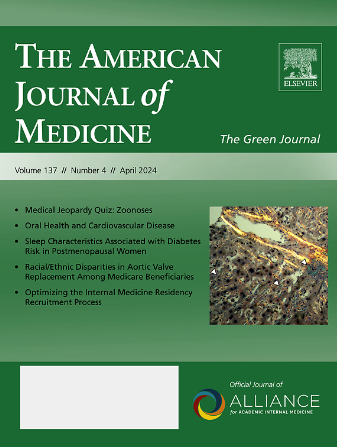Clinically Guided Adaptive Machine Learning Update Strategies for Predicting Severe COVID-19 Outcomes
IF 2.5
3区 医学
Q1 MEDICINE, GENERAL & INTERNAL
引用次数: 0
Abstract
Background
Machine learning algorithms are essential for predicting severe outcomes during public health crises like COVID-19. However, the dynamic nature of diseases requires continual evaluation and updating of these algorithms. This study aims to compare three update strategies for predicting severe COVID-19 outcomes postdiagnosis: “naive” (a single initial model), “frequent” (periodic retraining), and “context-driven” (retraining informed by clinical insights). The goal is to determine the most effective timing and approach for adapting algorithms to evolving disease dynamics and emerging data.
Methods
A dataset of 1.11 million COVID-19 patients from diverse U.S. regions was used to develop and validate an XGBoost algorithm for predicting severe outcomes upon diagnosis. Data included patient demographics, vital signs, comorbidities, and immunity-related factors (prior infection and vaccination status) from January 2007 to November 2021. The study analyzed the performance of the three update strategies from March 2020 to November 2021.
Results
Predictive features changed over the pandemic, with comorbidities and vitals being significant initially, and geography, demographics, and immunity-related variables gaining importance later. The “naive” strategy had an average area under the curve (AUC) of 0.77, the “frequent” strategy maintained stability with an average AUC of 0.81, and the “context-driven” strategy averaged an AUC of 0.80, outperforming the “naive” strategy and aligning closely with the “frequent” strategy.
Conclusions
A context-driven approach, guided by clinical insights, can enhance predictive performance and offer cost-effective solutions for dynamic public health challenges. These findings have significant implications for efficiently managing healthcare resources during evolving disease outbreaks.
用于预测严重 COVID-19 结果的临床指导性自适应机器学习更新策略。
背景:机器学习算法对于预测 COVID-19 等公共卫生危机的严重后果至关重要。然而,疾病的动态特性要求对这些算法进行持续评估和更新。本研究旨在比较预测 COVID-19 诊断后严重后果的三种更新策略:"天真"(单一初始模型)、"频繁"(定期再训练)和 "情境驱动"(根据临床见解进行再训练)。目的是确定最有效的时机和方法,使算法适应不断变化的疾病动态和新出现的数据:方法:利用来自美国不同地区的 111 万 COVID-19 患者数据集,开发并验证了一种 XGBoost 算法,用于预测诊断后的严重后果。数据包括 2007 年 1 月至 2021 年 11 月期间患者的人口统计学特征、生命体征、合并症和免疫相关因素(既往感染和疫苗接种情况)。研究分析了 2020 年 3 月至 2021 年 11 月期间三种更新策略的性能:结果:预测特征在大流行期间发生了变化,合并症和生命体征最初很重要,而地理、人口统计学和免疫相关变量后来变得越来越重要。天真 "策略的平均AUC为0.77,"频繁 "策略保持稳定,平均AUC为0.81,而 "情境驱动 "策略的平均AUC为0.80,优于 "天真 "策略,与 "频繁 "策略接近:结论:以临床洞察力为指导的情境驱动方法可以提高预测性能,为应对动态的公共卫生挑战提供具有成本效益的解决方案。这些发现对于在疾病爆发演变期间有效管理医疗资源具有重要意义。
本文章由计算机程序翻译,如有差异,请以英文原文为准。
求助全文
约1分钟内获得全文
求助全文
来源期刊

American Journal of Medicine
医学-医学:内科
CiteScore
6.30
自引率
3.40%
发文量
449
审稿时长
9 days
期刊介绍:
The American Journal of Medicine - "The Green Journal" - publishes original clinical research of interest to physicians in internal medicine, both in academia and community-based practice. AJM is the official journal of the Alliance for Academic Internal Medicine, a prestigious group comprising internal medicine department chairs at more than 125 medical schools across the U.S. Each issue carries useful reviews as well as seminal articles of immediate interest to the practicing physician, including peer-reviewed, original scientific studies that have direct clinical significance and position papers on health care issues, medical education, and public policy.
 求助内容:
求助内容: 应助结果提醒方式:
应助结果提醒方式:


